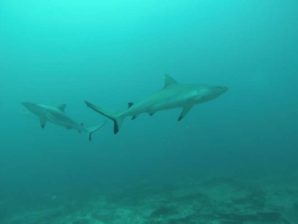4 Reef 1 Exped
Read the full report here: BIOT Expedition Report Reef 1 March 2019 (PDF)

The expedition was focused on various components of the reef ecosystem, including fish, invertebrate and coral communities, as well as quantifying hydrodynamic processes at many scales. Altogether, 6 collaborating teams from BPMS projects were represented. The expedition participants came from the Australian Institute of Marine Science, Exeter University, Lancaster University, Stanford University, the Zoological Society of London, Imperial College London, Oxford University, and University of Victoria.
Following the mass coral bleaching of 2015/2016, most reefs across the region displayed lower coral cover than several years prior (Figure 1). However, there were strong signs of coral recovery on some reefs. Recent growth and proliferation of acroporid corals was observed at several sites amidst dead coral skeletons presumably from the prior bleaching event (Figure 2). Benthic surveys of coral cover and measurements of reef growth were performed during this expedition and will inform on rates of coral recovery across the region.
Despite the absence of standardized surveys, it appears shark abundance continues to increase across the region. Evidence from diver observations has suggested the numbers of sharks had previously declined since the 1970s. The 2018 expeditions saw the greatest number of sharks per dive in recent years, and this expedition recorded numbers even higher. Grey reef and tawny nurse sharks were the most abundant, with black tip and white tip reef sharks also commonly observed.
